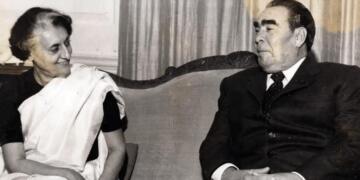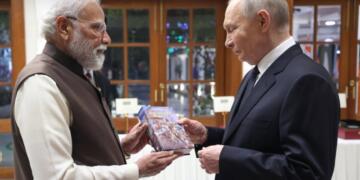Textiles have long defined exports of the Indian subcontinent. The people of Indus Valley Civilization, as well as those of Vedic Civilization, knew weaving and spinning of cotton. The country is still the second largest producer of fibre with major fibres being cotton, silk, jute, wool and man-made fibres. However, cotton is still the major fibre of the country as 60 percent of the textile industry is cotton based. It is not just the fibre produced in the country that dominated the global market, the Indigo Dye was major export of the country to Europe for long. When Europeans started sea-exploration, India was the first country on their list due to its attractive resources of spice and textile.
The colonial masters of the country destroyed textile industry of the country in favor of Industrial production in England. The naturally produced Indigo Dye and fine clothes were no longer attractive in comparison to synthetically produced cheaper Indigo and clothes produced through giant machines. Thus, the textile industry crumbled under colonial oppression. However, once the country got independence and the production system was no longer vulnerable to colonial exploitation, the textile industry bounced back. After the economic liberalization in 1990s, textile became a major export of the country. In the last few years, the textile was once again under stress due to policies of previous government. However, the industry is reviving once again since Smriti Irani has taken the helm at the Ministry of Textiles. The export of textiles and apparel has grown exponentially in last few months.
The Indian textile exports to United States increased by one percentage point from a year ago to 33 percent, as per data compiled by JM Financial Institutional Securities Ltd. This is the second consecutive month India increased its US market share. The retail sales this holiday has been one of the strongest in years and this helped Indian exports. “After a weak start in 2018, India’s exports to the US (in the US dollar terms) in terry towels/cotton sheets have witnessed strong recovery with YoY growth of 24.2%/7.2% (in the past three months),” said an analyst at JM Financial.
The revision of duty drawback rates by Modi government also helped the Indian exporters, “The recent revisions in duty drawback rates are expected to be marginally positive for the profitability and competitiveness of most segments of the Indian textile exporters,” said rating agency Icra. The revision of duty rates has also helped to boost operating profit of textile exporters. Some other factors helping exporters are rupee depreciation and extension of merchandise exports from India scheme. “The concerned ministries have also come forward with timely policy support and intervention to boost the industry which was under major stress, especially after the implementation of GST,” said Sanjay K Jain, chairman, Confederation of Indian Textile Industry.
The overall exports grew by 17.86 percent in the month of October in comparison to the same month in the previous fiscal year. The Ministry of Commerce and Industry has cut the bureaucratic red tape which hurt the growth in previous years. The recent Ease of doing business ranking which also recognized the ranking for ‘trading across borders’ saw second highest improvement after construction permits, it rose to 80 from 146 last year. The time and cost for import and export in terms of documentation which largely moved online and border compliance has also been made more efficient. The revival of exports and textile industry will help the economy of the country.





























